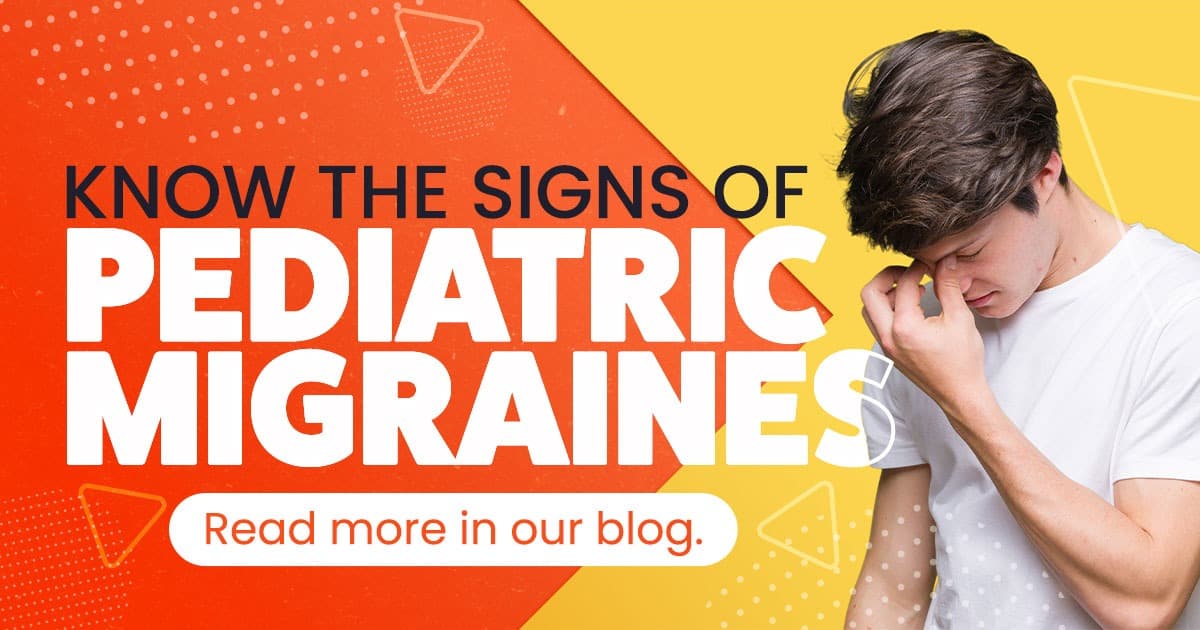Los dolores de cabeza y las migrañas pueden afectar a cualquier persona, a cualquier edad, incluyendo niños pequeños y adolescentes. Las complejidades y los síntomas del trastorno son diferentes en niños que en adultos. Al mismo tiempo, los niños no siempre pueden comunicar sus síntomas con detalle. Como resultado, muchos pacientes pasan años sin ser diagnosticados. Por ello, es importante que los padres aprendan a reconocer las migrañas en niños y adolescentes que sufren dolores de cabeza intensos y frecuentes.
Signos y síntomas
Aproximadamente el 10% de los niños en edad escolar sufren migrañas, y hasta el 28% de los adolescentes (de 15 a 19 años) se ven afectados por ellas. La Fundación Americana de la Migraña Se describen algunas diferencias clave entre las migrañas de los niños y las de los adultos:
- Las migrañas en los niños suelen ser de menor duración y ocurren con menos frecuencia.
- El dolor que experimentan los niños tiende a ser más bilateral, como en la frente, en lugar de unilateral (en un lado de la cabeza).
- Los cambios en el comportamiento de un niño incluyen querer dormir o acostarse en una habitación oscura y tranquila.
Si bien los síntomas en niños y adolescentes pueden variar de los de los adultos, los niños pueden presentar la misma discapacidad. A menudo, desarrollan ansiedad anticipatoria, temiendo que, en cualquier momento, un ataque pueda afectar su vida. Además, faltan a la escuela el doble de veces y no pueden participar en las actividades habituales extraescolares y de fin de semana.
Aprenda los detonantes.
Independientemente de si a su hijo le han diagnosticado o no, es importante mantener un registro diario de dolores de cabeza Es un paso importante en el manejo de las migrañas. Este diario registra la frecuencia, la gravedad y los comportamientos observados. antes, durante y después de un ataque. También resume lo que encontraron o consumieron.
Por ejemplo, puede observar cambios en su comportamiento, como pérdida de apetito, irritabilidad, bostezos, antojos, letargo, retraimiento y cambios de humor. Otros indicadores pueden incluir sonambulismo, hablar dormido y terrores nocturnos. La información que recopile puede aislar e identificar los factores que desencadenan los ataques y cualquier patrón de comportamiento que preceda a una migraña, lo que sirve como una alerta temprana para actuar.
Los desencadenantes más comunes de la migraña en los niños son:
- Patrones de sueño inadecuados o cambios en los patrones de sueño
- Saltarse comidas
- Estrés
- Cambios en el clima
- Luces brillantes
- ruidos fuertes
- olores fuertes
- Fluctuaciones hormonales
Un futuro menos doloroso
Muy pocos medicamentos disponibles para la migraña han sido aprobados por la FDA para su uso en niños. Disponer de opciones seguras y eficaces de prevención y tratamiento es esencial para aliviar el sufrimiento infantil y mejorar el control general de las migrañas.

Woodland Research Northwest busca niños de 6 a 11 años con migrañas frecuentes para inscribirse en próximos estudios que buscan nuevas opciones. ¡Explore hoy mismo si los estudios sobre migraña pediátrica podrían ser una opción para su hijo! Llámenos al 479-927-3000 o visite nuestro sitio web. sitio web Para más detalles y aplicación.
Fuentes:

